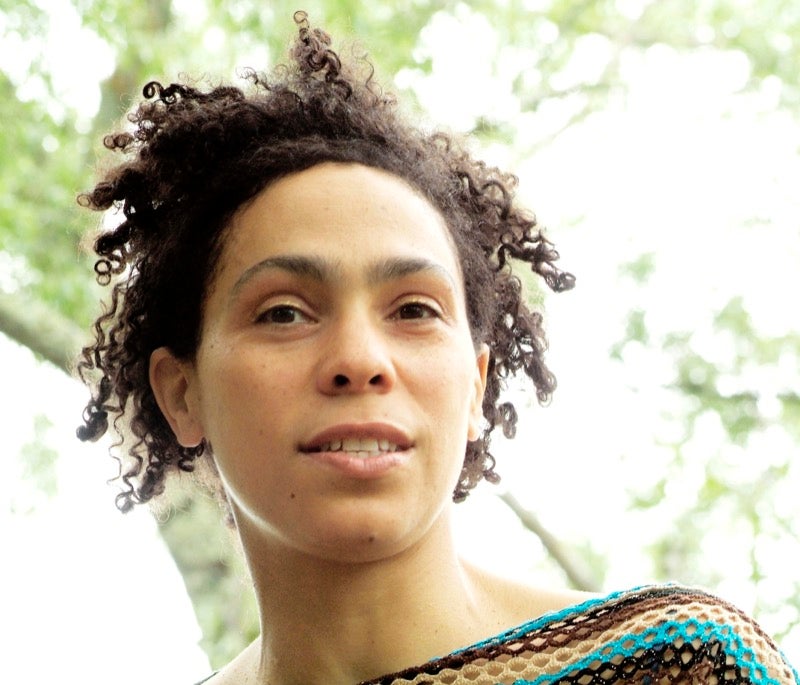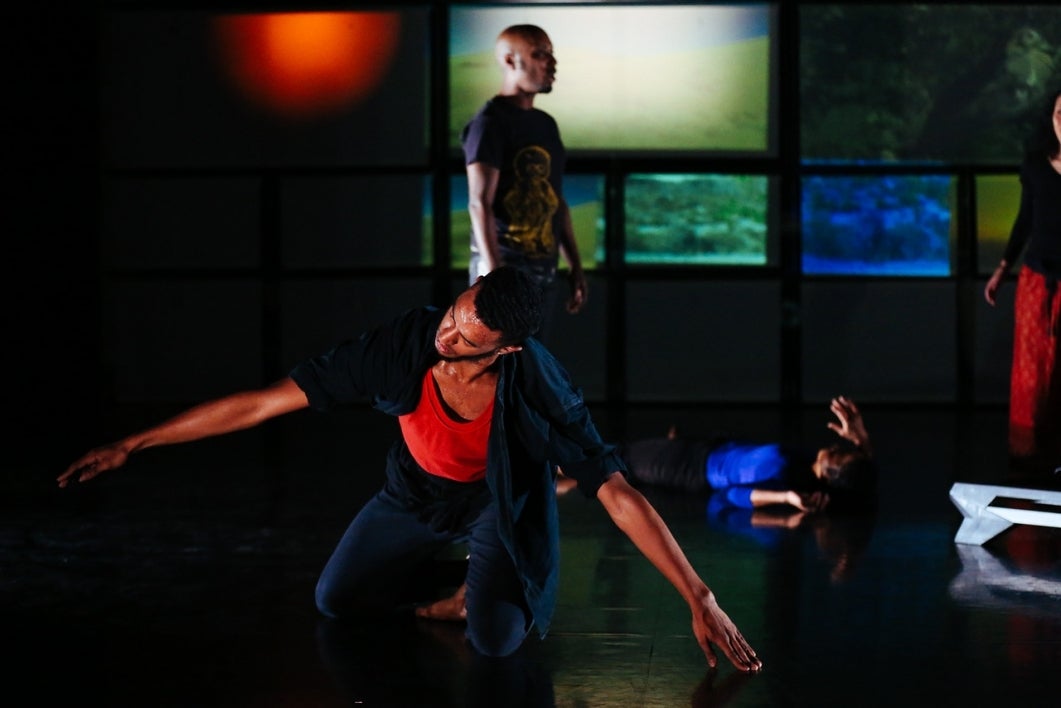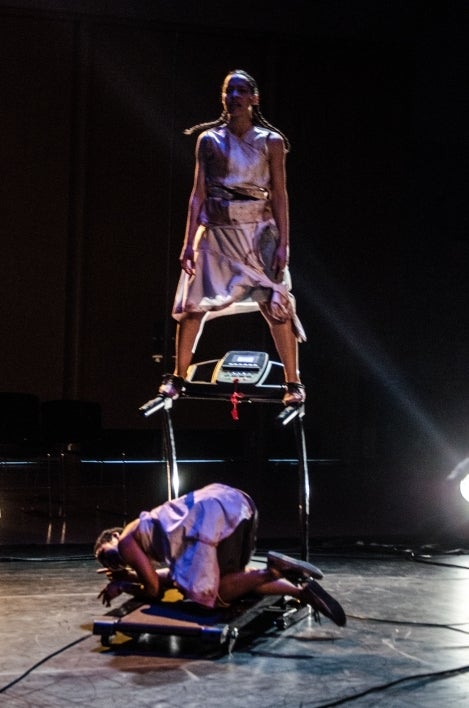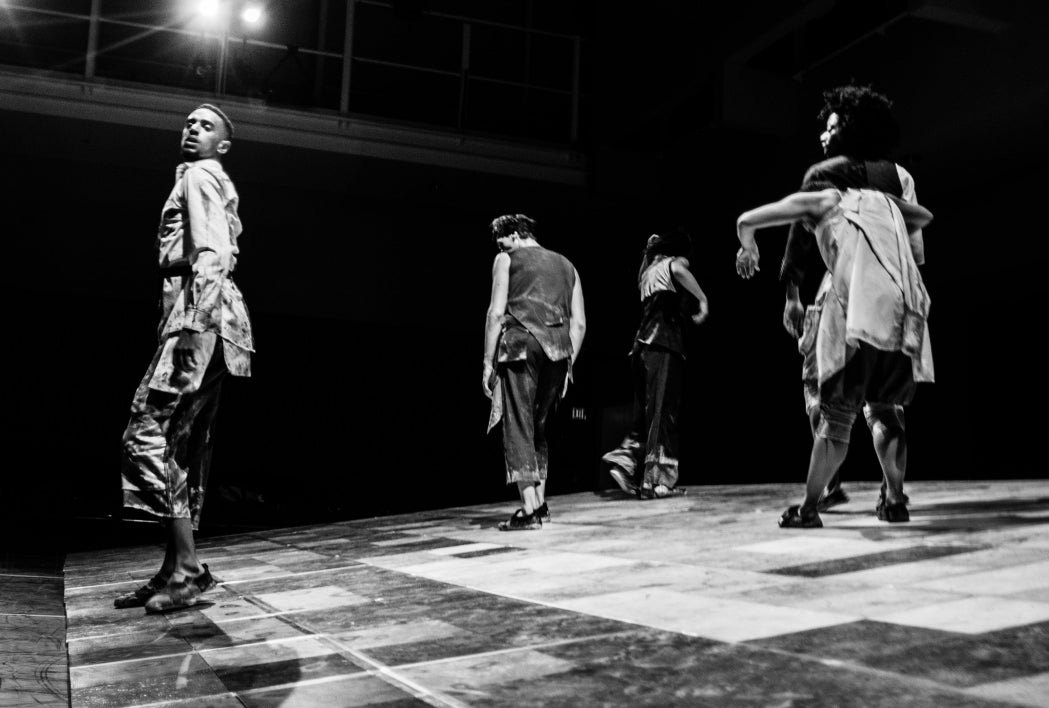Movers and makers are innovating art and science at the sixth annual MOCO International Conference on Movement and Computing at Arizona State University on Oct. 10-12.
Artists, engineers and humanists from more than 20 countries are exploring what it means to merge mind, movement and machines in ways that may someday help resolve some of life’s biggest challenges.
MOCO comes to ASU through the planning and efforts of conference chair Grisha Coleman, an assistant professor in the School of Arts, Media and Engineering in the Herberger Institute for Design and the Arts at ASU.

Grisha Coleman
“I pitched for the conference to be held here at ASU because of ASU’s transdisciplinary emphasis and the work that we have built up in the School of Arts, Media and Engineering, specifically,” said Coleman. “What better way to engage our students than to share this creative learning space with them?”
Inspired by the theme “Movement Imaginaries,” Coleman says faculty and students from the School of Arts, Media and Engineering, the School of Art and the School of Music will be among those presenting their work at the international conference.
“I chose this theme to allow the practitioners and scholars to play in the sand together,” Coleman said. “As the range of topics can go from sensory acuity and sonic feedback to adipose tissue and machine learning algorithms, we learn that there is nothing that humans don’t touch through physicality, through our imaginaries.”
With a focus on the use of computational technology to understand human movement, this year’s MOCO conference invited submissions from a wide range of disciplines – robotics, dance, psychology, artificial intelligence, philosophy, anthropology, music, health care, sports science, games and animation among them.
Coleman herself is a product of transdisciplinary learning and instruction. A dancer, composer and digital media artist, Coleman says her immersion into the movement and computing world was inspired by questions asked with other researchers about “how do dancers think?” She shares these experiences in somatics and movement to help students think about the technologies they create.
Coleman is also at the helm of the echo::system project, a five-part enterprise that assembles dance, sound, visual media and computational platforms to highlight the effect that humans are having on the environment.
Having graced venues in Italy, the United Kingdom, Greece, Canada and France in previous years, the 2019 MOCO conference is making its United States debut at ASU in its sixth year. Coleman says having the conference in the U.S. has allowed far more access to U.S. colleagues operating in the arts and digital culture space.
The 2019 MOCO International Conference on Movement and Computing Conference is being held over three days, Oct. 10–12 at Stauffer Communication Arts B building on ASU’s Tempe Campus. Installations and performances are open to the public at no charge over the weekend. Learn more about the event at the MOCO conference website.
Top photo courtesy of Grisha Coleman
More Science and technology

Diagnosing data corruption
You are in your doctor’s office for your annual physical and you notice the change. This year, your doctor no longer has your health history in five-inch stack of paperwork fastened together with…
Large-scale study reveals true impact of ASU VR lab on science education
Students at Arizona State University love the Dreamscape Learn virtual reality biology experiences, and the intense engagement it creates is leading to higher grades and more persistence for biology…

ASU-led space telescope is ready to fly
The Star Planet Activity Research CubeSat, or SPARCS, a small space telescope that will monitor the flares and sunspot activity of low-mass stars, has now passed its pre-shipment review by NASA.…






